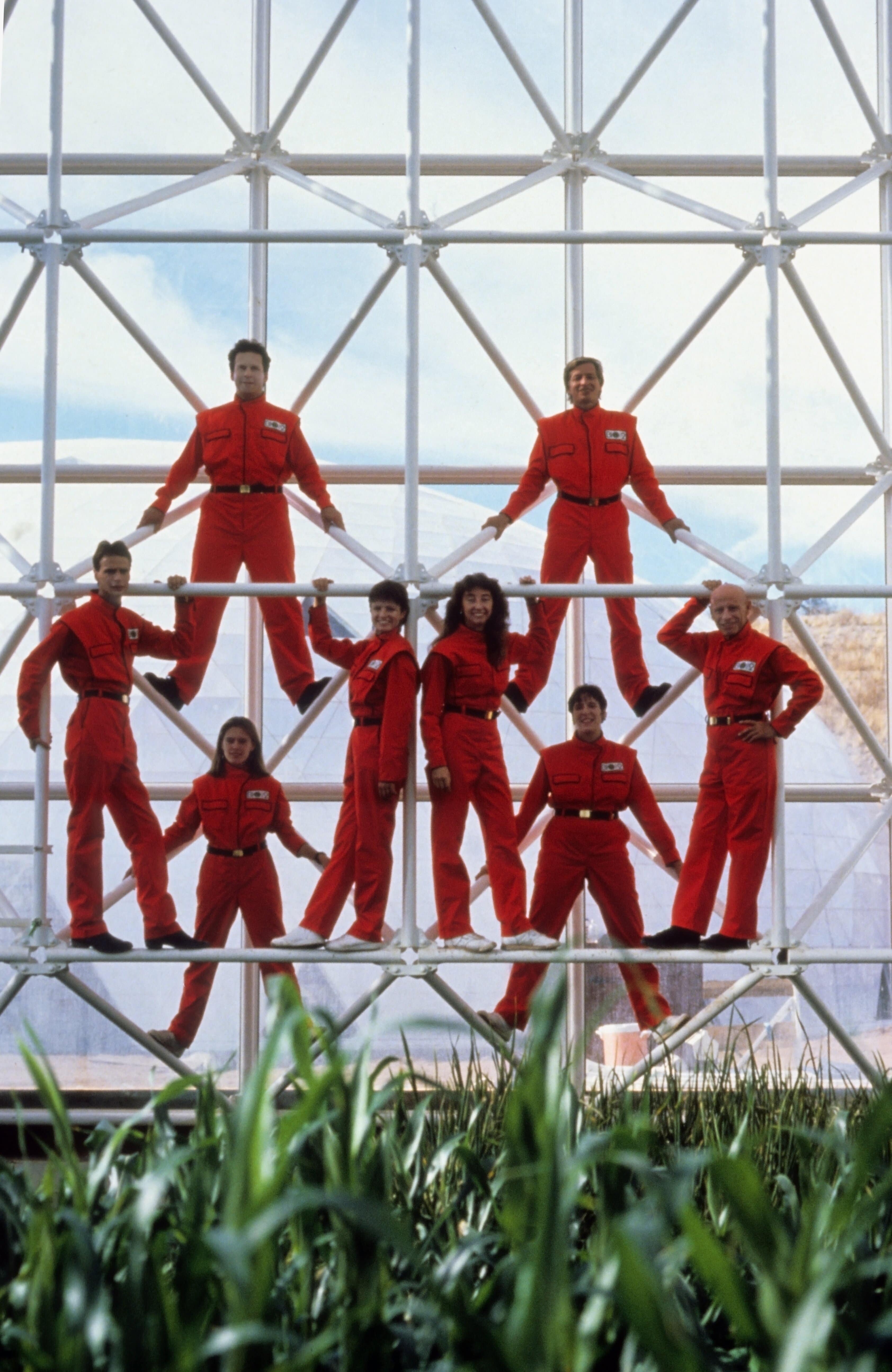'Spaceship Earth,' a wild new doc about Biosphere 2 habitat, launches May 8
"Spaceship Earth," a new documentary set to premiere May 8, reveals the incredible true story of life in quarantine inside the experimental habitat Biosphere 2.
Biosphere 2 was constructed in Oracle, Arizona between 1987 and 1991 as an experimental research facility originally intended to show that human researchers could be kept alive and healthy in an isolated "bubble-like" environment. In 1991, the first team of scientists sealed itself inside the habitat.
The visually striking installation (it looks like something from a sci-fi film) features a number of human-created biomes including small, capsule versions of a rainforest, ocean, coral reef and more. The facility was originally meant to be a low-key, forward-thinking scientific investigation, but Biosphere 2 was so reminiscent of science fiction that when photos got out of the facility, it immediately caught the world's attention.
Related: The best sci-fi movies and TV shows to watch on Amazon Prime
However, while the quarantined researchers seemed to be living an idyllic life inside of this incredible facility, things started to go wrong. While the first crew was able to complete their two-year mission, albeit there were some issues, the second crew of "Biospherians" had to leave their mission earlier than anticipated and some have remembered the original experiment as a "failure." The abrupt ending to the experiment left many to make presumptions about the researchers and what really happened inside this elusive facility.
That's where "Spaceship Earth" comes in. In the documentary, director Matt Wolf aims to tell the full story of what really went on during the original Biosphere 2 experiment decades after its abrupt end. The film, produced by Neon and chosen as a 2020 Sundance Film Festival Official Selection, reveals the story of the eight original "Biospherians" who completed scientific research while quarantined in the facility. The film utilizes both modern interviews with the researchers and archival footage from the original experiment.
"I set out to tell the story of these unconventional visionaries, warts and all, but I also recognized that this is a story much bigger than them. I wanted to make a film about the entire world — how we might live in it sustainably, and what imprint we might make during our lifetimes," Wolf said in a press statement.
Breaking space news, the latest updates on rocket launches, skywatching events and more!
The film will premiere May 8 on digital platforms and on the streaming platform Hulu.
- Sci-Fi Classic 'Moon' Available on 4K Ultra HD for Apollo 11 Anniversary
- A complete guide to what 'Star Trek' to watch before 'Star Trek: Picard'
- 'The Expanse': Here's a Recap of Seasons 1-3 Ahead of Season 4
Follow Chelsea Gohd on Twitter @chelsea_gohd. Follow us on Twitter @Spacedotcom and on Facebook.
OFFER: Save 45% on 'All About Space' 'How it Works' and 'All About History'!
For a limited time, you can take out a digital subscription to any of our best-selling science magazines for just $2.38 per month, or 45% off the standard price for the first three months.

Chelsea “Foxanne” Gohd joined Space.com in 2018 and is now a Senior Writer, writing about everything from climate change to planetary science and human spaceflight in both articles and on-camera in videos. With a degree in Public Health and biological sciences, Chelsea has written and worked for institutions including the American Museum of Natural History, Scientific American, Discover Magazine Blog, Astronomy Magazine and Live Science. When not writing, editing or filming something space-y, Chelsea "Foxanne" Gohd is writing music and performing as Foxanne, even launching a song to space in 2021 with Inspiration4. You can follow her on Twitter @chelsea_gohd and @foxannemusic.


